
When planning out your homestead growing space, the vegetable garden tends to get most of the attention. However, you’re doing your family a disservice if you don’t prioritize learning how to set up a multi-fruit backyard orchard.
Growing fruit trees seems intimidating to the uninitiated, but the reality is that some prep work upfront can lead to years of abundance.
A single tree can give you fresh fruit for a decade or more, so multiply that by an orchard, and you’ll rarely (if ever) be in want of homegrown fruit.
However, learning how to set up a multi-fruit backyard orchard isn’t as simple as plopping some trees in the ground. You’ll need to perform careful planning to set yourself up for success. Do the research now, so you aren’t paying for careless mistakes in the years to come.
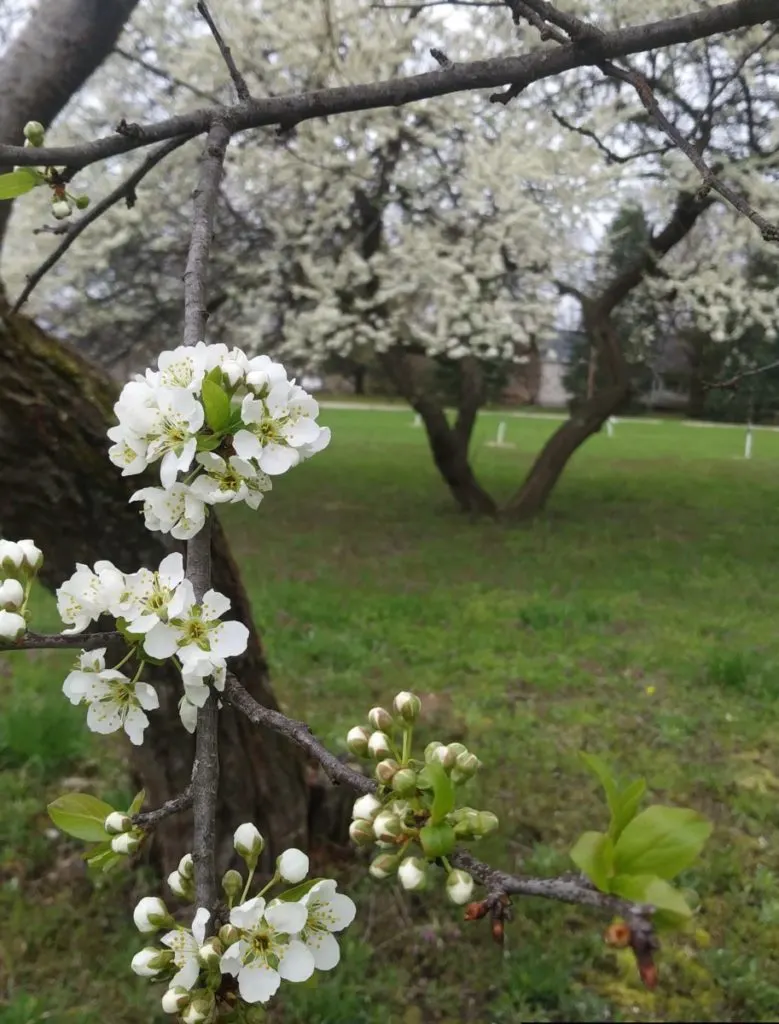
The Benefits of a Backyard Multi-Fruit Orchard
Let’s begin by defining what we mean by a backyard orchard.
When most people think of an orchard, they picture acres of uniform trees towering twenty feet or more into the sky. That’s both unrealistic and unnecessary for most households. Few people have the space for this kind of setup, nor do they want to climb tall ladders to harvest hundreds of pounds of fruit.
A better option is to densely plant a series of small trees throughout your yard, each a different variety. Not only does this lead to easier maintenance and harvesting, but the fruit should ripen at staggered intervals over the summer and fall. This means you likely won’t be overwhelmed with more fruit than you can handle in any given week.
Likewise, by keeping your trees small, you can pack in more varieties within the same space. This gives you more options to work with, and it also reduces your overall risk of losing the entire bounty in any given year.
For example, an early frost that kills your apricot blossoms might spare the apples, which tend to bloom later in the year.
You’ll also reap the rewards of cross-pollination when you plant numerous varieties. Not only will you get better production out of the arrangement, but your backyard will offer a buffet all season long for local pollinators.
5 Questions to Ask Before Setting Up a Multi-Fruit Backyard Orchard
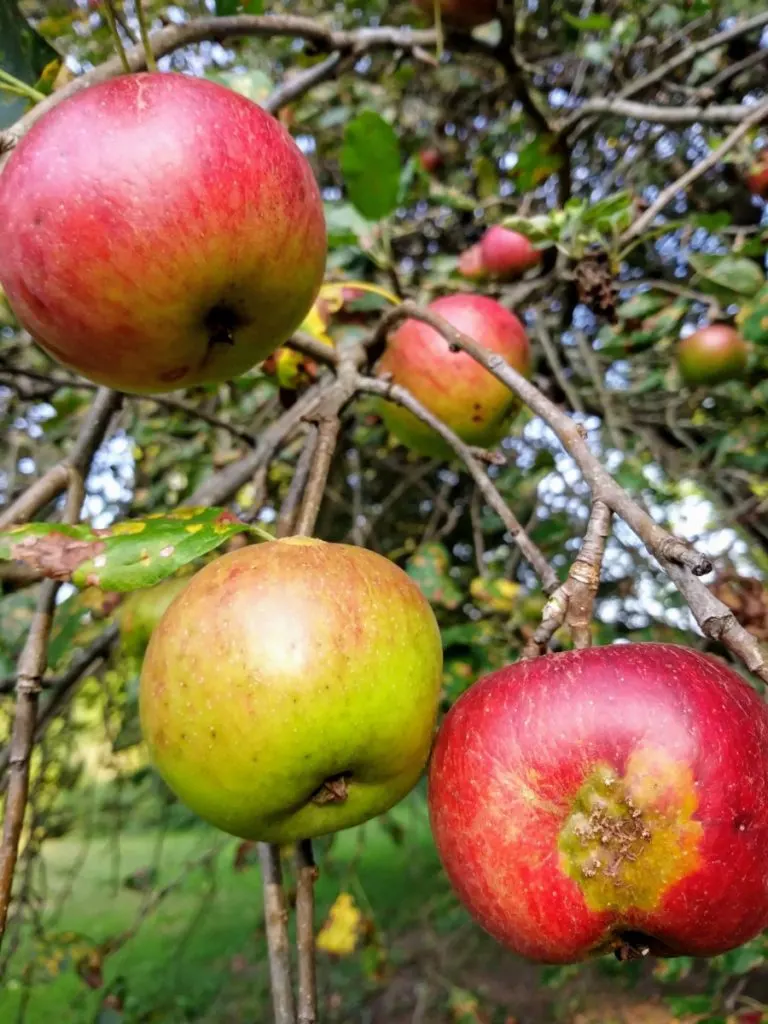
Are you feeling ready to jumpstart your backyard orchard experience? Pump the breaks for now. Diving in too quickly can lead to costly mistakes. For that reason, it’s best to begin by asking yourself the following questions.
1. What’s my orchard fruit goal?
All home orchardists need to define what their goals are before getting caught up in the excitement of buying trees.
Are you interested in maximizing your apple cider production? Some varieties are designed for this. Baking and canning enthusiasts should likewise seek out fruit types suited to these purposes, while those who prefer to only snack on fresh fruit will have different taste priorities.
Do you mind putting in extra labor from a cultivation standpoint to grow flavors not found at the store? Then heirlooms make sense. If, in contrast, you want low maintenance trees, you can trust to withstand pest and disease pressures, then you might want to invest in newer cultivars that are engineered to be resilient.
2. What’s my climate zone?
As much as you might be dreaming of a backyard filled with apples alongside citrus trees, what you can grow will be primarily dictated by your hardiness zone.
Speaking with local fruit growers, your closest university’s extension office, and nearby nurseries will give you a sense of what your region can support. This will also help you understand what region-specific pests and diseases you need to be most aware of.
3. What is my site’s drainage?
Most fruit trees don’t do well in overly wet soil, so good drainage is critical for success. You’ll need to assess your planting area’s soil conditions before putting trees in the ground to see whether you need to amend anything first.
A time-tested way to assess your drainage is the “hole test.” Dig a one-foot hole at your planting site and fill it with water. If it drains within three or four hours, fill it again. You’ll run into problems if the hole doesn’t drain within four hours after either the first or second filling.
In this case, you have a few options.
- Plant trees above the soil line on raised mounds.
- Install a French Drain to filter water away from the planting area
A lack of water can be equally problematic. Make sure your tree planting site has irrigation access so that you can nurture your trees through any dry spells. Expect most trees to need at least a gallon of water a week.
4. What’s the sun exposure?
You’ll get the best fruit by planting your fruit trees in the sunniest places of your yard unless you live in a climate where temperatures are regularly above 110 degrees in the summer. In this case, make sure your trees will get some afternoon shade.
5. How much space do I have?
There’s a lot to consider when factoring in spacing needs for a backyard orchard. This includes the number of trees you want, how much fruit you expect from each tree, and how much energy you want to devote to maintaining a specific size.
Don’t assume that bigger is better. Small trees may lead to lower yields, but they are also far easier to prune, and harvest, and they allow you to fit more varieties in a single space.
Your nursery should provide spacing guides for each type of tree, which largely depends on their rootstock. Keep in mind that it’s fine to go further apart, but that you’ll run into problems (especially regarding the tree roots) if you attempt to pack them in too close together.
Likewise, take note that backyard fruit trees don’t need to grow in orderly rows like a commercial orchard. You can stagger them around your property in an aesthetically pleasing way. Some dwarf varieties will even thrive in pots, which gives you the advantage of portability.
How to Plant a Fruit Tree
Once you’ve figured out what fruit trees make sense for you and have them on your property, it’s time to plan for planting. If you live in a northern region, spring planting is best so that the trees aren’t forced to go into dormancy right away.
Don’t shy away from planting bare root trees, as they actually do better than their potted counterparts at adjusting to new growing zones and are more able to withstand aggressive pruning.
Plan to plant out bare root trees as soon as possible after getting them. If you need to wait a few days, keep the roots wrapped and moist or consider “heeling in” the roots by covering them with a few inches of damp soil or sawdust first.
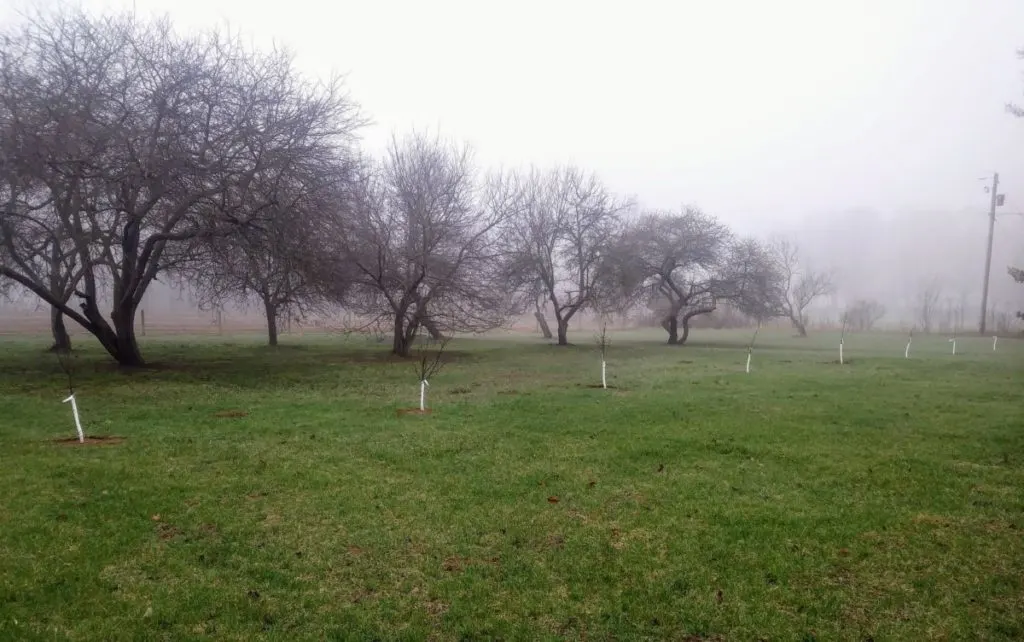
You’ll want to dig the planting hole as deep as the roots are tall, and wide enough that the longest roots don’t need to bend. Loosen the soil on the hole’s sides as well so that the roots can readily expand into new areas.
Make sure you don’t plant the tree deeper than the soil line from the nursery. Otherwise, you risk suffocating it or causing the part above the graft line to root, which will cause the tree not to grow true to its variety.
Position the tree in the hole, ensuring that it is straight and has its roots spread out. Return the dug-out soil to the hole, tamping it around the base, and carefully watering the tree in place to ensure it is settled.
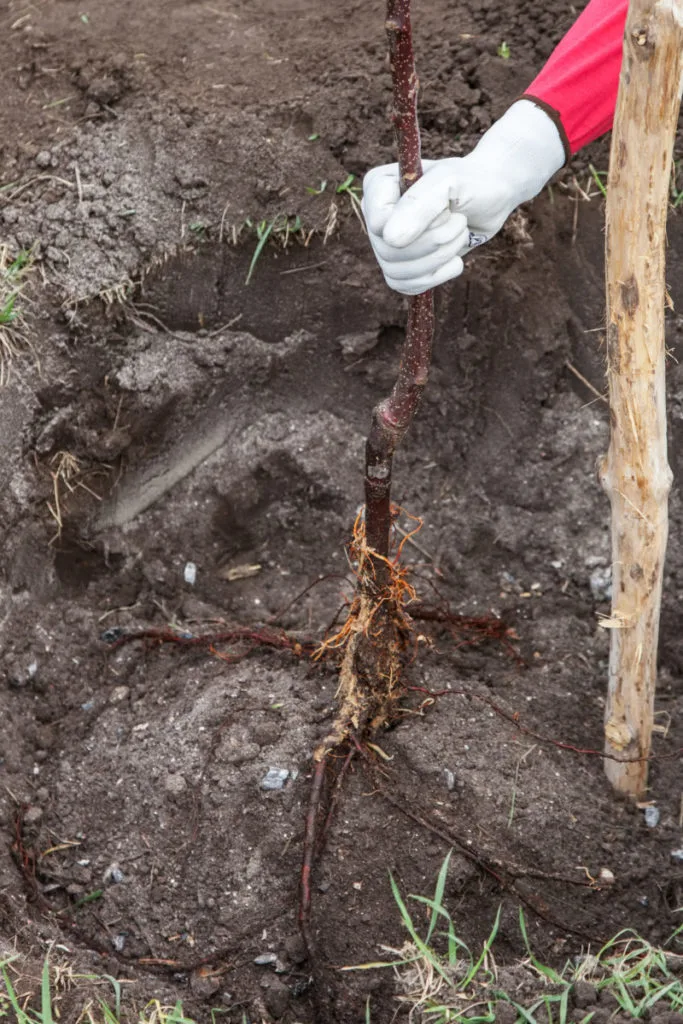
Fertilizer isn’t a friend of baby trees. Not only can excessive nitrogen burn their roots and stunt the tree, but it can prevent them from expanding further out into unamended soil by creating a “pot” that the tree gets stuck in.
What you can do is top-dress the tree with a mulch layer. It will add nutrients to the soil as it breaks down while stabilizing the soil around the base and retaining moisture. Just make sure to keep the mulch several inches away from the trunk itself so that you don’t inadvertently suffocate it.
Pruning Your Newly Planted Fruit Tree
Once your tree gets in the ground, it’s time for what feels like the most challenging part for first-time planters—pruning. Brace yourself, as you’ll need to cut off a lot more of your baby tree than seems logical.
Not only does pruning upon planting reduce transplant stress to help your tree get established, but it stimulates new growth and promotes the development of strong branches that will eventually support high-quality fruit production.
The pruning specifics for you will depend on your tree varieties and chosen rootstock. In general, plan to chop the top of your tree to no taller than four foot, and to cut each side branch in half or shorter.
Your goal is to concentrate the tree’s energy towards the best branches and buds this first year so that it builds strength over time. Plan to prune again the following spring, when you will be making different cuts to continue to focus the tree’s growth in the ideal directions for a well-shaped tree.
Your nursery will likely provide you with a pruning guide upon purchase. If not, you can contact your local extension agency for resource recommendations for the trees in your region. And remember, you learn to prune trees through practice. No two people prune the exact same way, and it’s okay just to jump in.
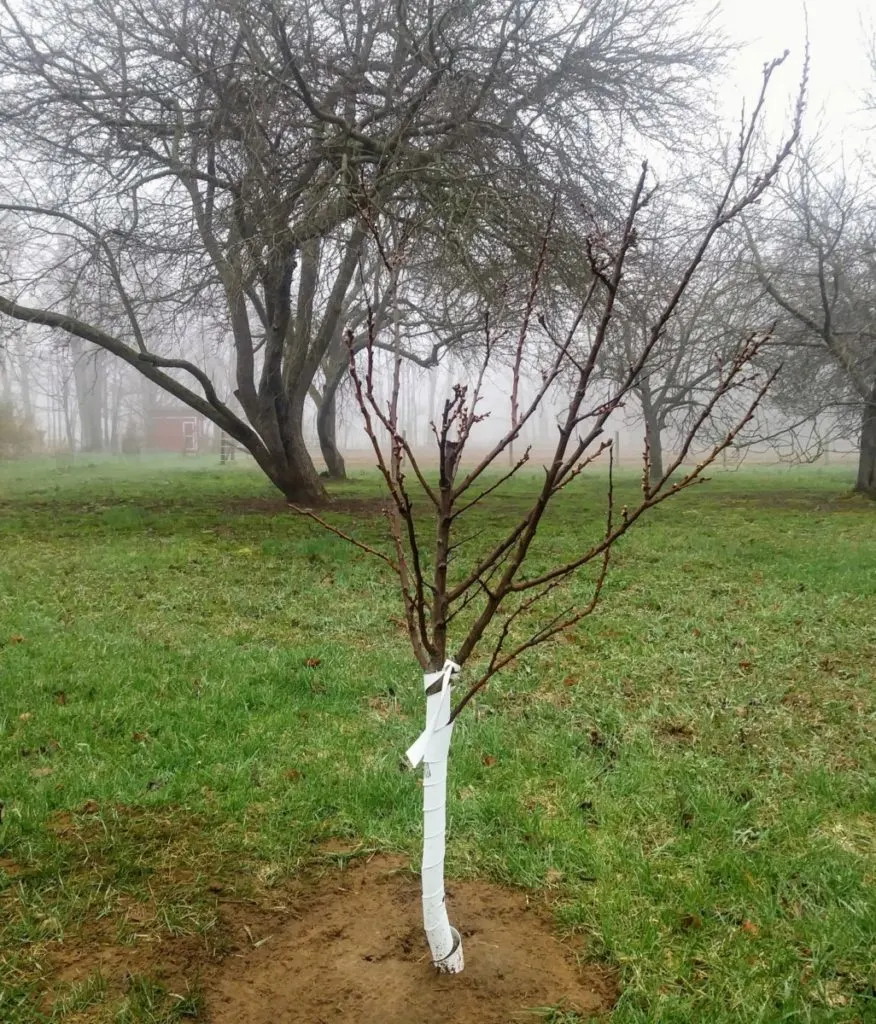
Long-term Backyard Fruit Tree Maintenance
Once your trees are planted and pruned, maintenance becomes primarily about watching and waiting. You’re still several years from your first harvest, and it’s up to you to ensure each tree stays pest and disease-free in the meantime.
Trees won’t require much water after planting, though it’s good to ensure they get at least a gallon a week, especially if you live in dry climate. Sunburn can also cause stress to young trees on hot days, so consider painting them with an interior white latex paint diluted 50% with water.
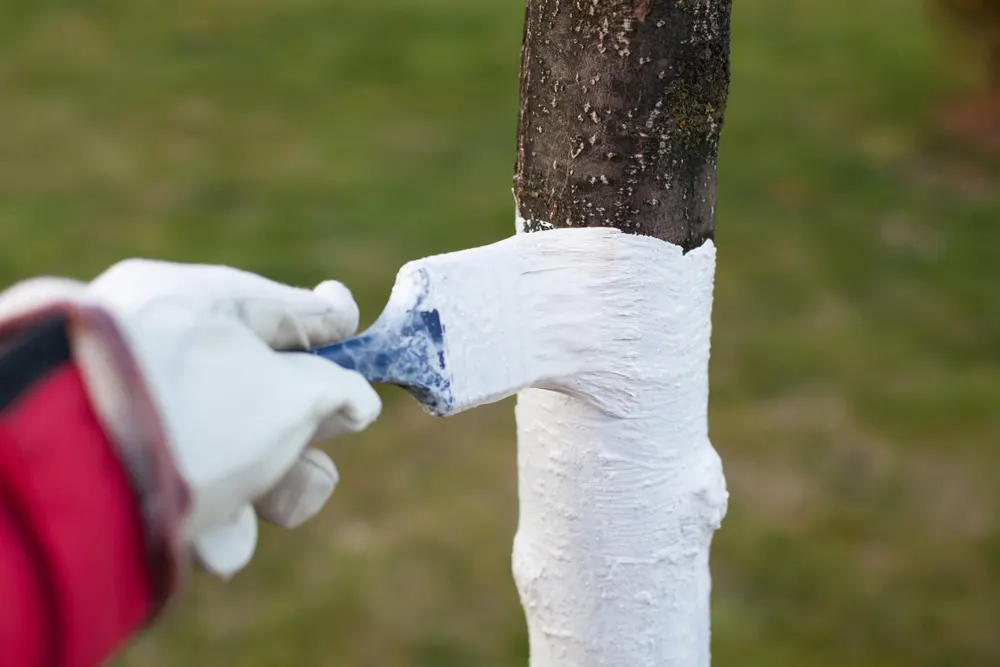
You also want to make sure that each tree’s graft line stays exposed and above the soil line. Otherwise, you risk the tree transforming into its root variety, which can lead to a completely different type of fruit.
It’s also important to carefully consider how you will protect your trees from wildlife. Rabbits, voles, and other rodents love to nibble on young bark and can even chew up tree roots, which will stunt or even kill your trees. Invest in plastic fruit tree protectors from the beginning so you aren’t left with regret after a feeding frenzy.
Hard as it may be, it’s a good idea to thin or even altogether remove any fruit that forms the first two years on your new trees. Growing fruit to full-size takes energy away from the tree that can be better put towards branch production for a better tree over time.
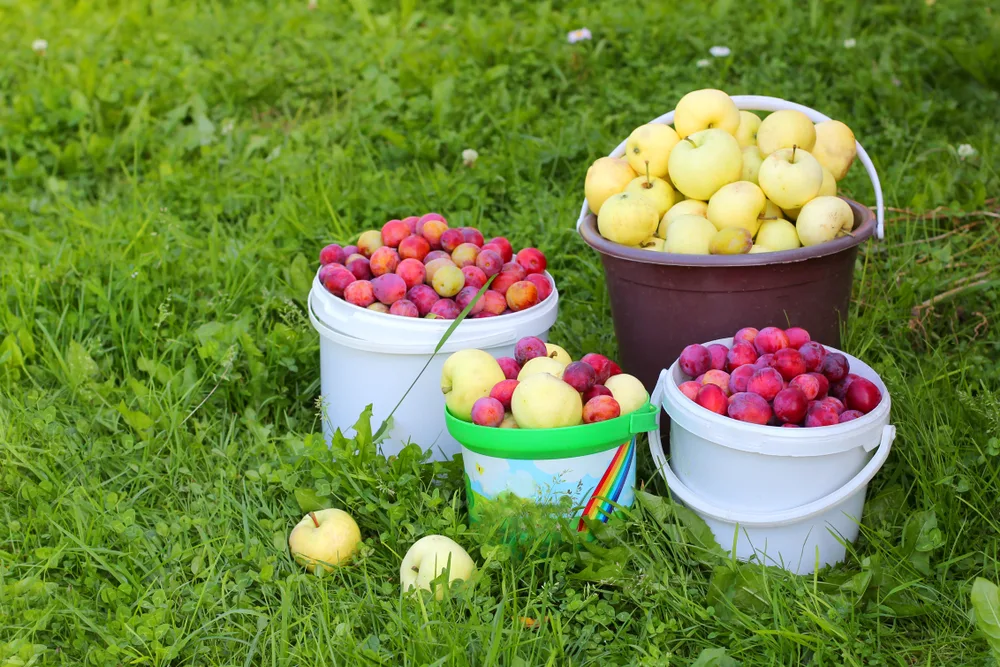
For me, an invaluable resource for fruit tree planting and pruning is The Holistic Orchard by Michael Philips. He goes through the necessary planting, care, and pruning process for dozens of varieties with a focus on keeping everything as biologically sound as possible.
It also offers comprehensive information on common pests and diseases and ecologically-sound ways to address them.
As you begin to dream about how to set up a multi-fruit backyard orchard, keep in mindful that the sooner you get your trees, the sooner you’ll enjoy your first harvest. So use this article as a launch point to begin the process of enjoying a sustainable fruit harvest for years to come.

Get the famous Rural Sprout newsletter delivered to your inbox.
Including Sunday ramblings from our editor, Tracey, as well as “What’s Up Wednesday” our roundup of what’s in season and new article updates and alerts.

